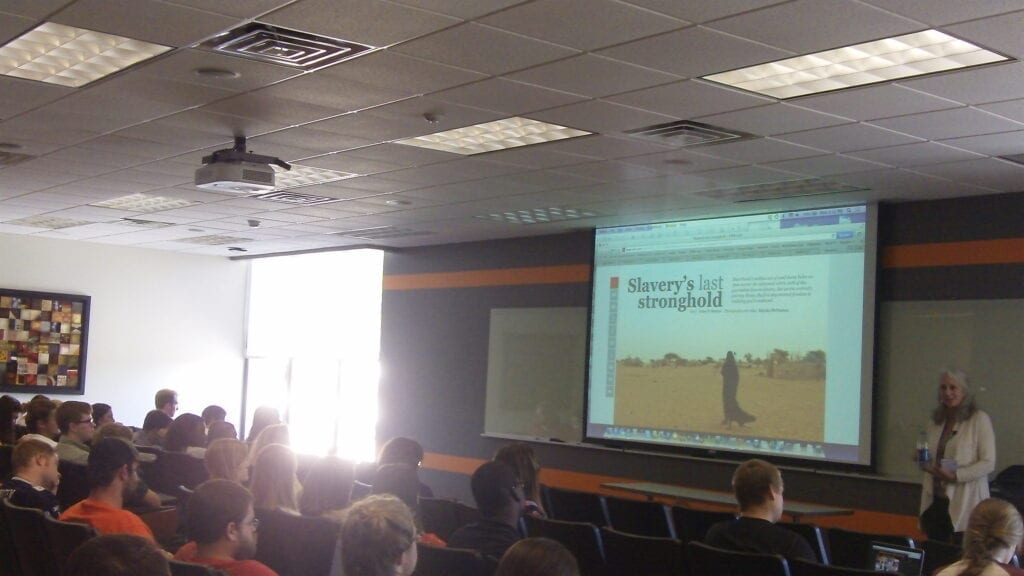Jan Winburn speaks to UT Student Body about telling the story, not just news
Journalism today is storytelling and much more, according to CNN digital senior editor, writing coach and guest speaker Jan Winburn as she spoke to a group of student writers in the College of Communication and Information’s Patrick Auditorium.

Winburn shows storytelling elements through the first hand accounts of slavery and human trafficking victims.


Journalism today is storytelling and much more, according to CNN digital senior editor, writing coach and guest speaker Jan Winburn as she spoke to a group of student writers in the College of Communication and Information’s Patrick Auditorium.
“Unbiased, multimedia storytelling is very much the direction that the journalism profession is heading,” said Jan Winburn.
Winburn asked her student audience where they received their news. The answers ranged from Facebook to Twitter, Vox and NPR.
A national poll provided by Winburn illustrated the stylistic adaptions and diversification of news reportage. Half of those who participated in the poll received their news from social media platforms such as Twitter and Facebook.
Winburn went on to explain the many new ways news is received by the audience.
“Data and platforms like Facebook and Reddit enable communities to share what they know and need to know and through this process have become a form of journalism,” she said.
“Sites like Vox that prioritize news are journalism. Collaboration and crowd-sourcing yield journalism that doesn’t necessarily end up in story form.
“Journalism can be a snapshot of current and ongoing knowledge. It can be 140 characters, or it can be a stream.”
Above all Wilburn emphasized the narrative process of a news story.
“Storytelling or making a narrative can be the most effective way to tell even a hard news story,” said Winburn on issues of suffering and human fortitude.
“Being more conversational in reporting can connect the material to the audience directly in a way that simple reporting just can’t,” Winburn said. “A narrative is not just a pretty lead that can be cobbled onto a hard news story.”
Winburn’s also told the story of a young lady that entered an Oreo stacking competition at her local grocery store. The little girl wasn’t the winner; however, she was the loser.
“She had something to lose, and we had something to gain from her story,” Winburn said. “Storytelling is finding out about who they are as people inside the larger issues.”
“Yes, the news will always be there, but we must always ask ourselves: how can we reveal who these people are? How can I tell their story?”
Edited by Maggie Jones

